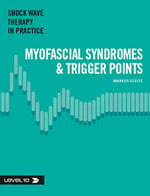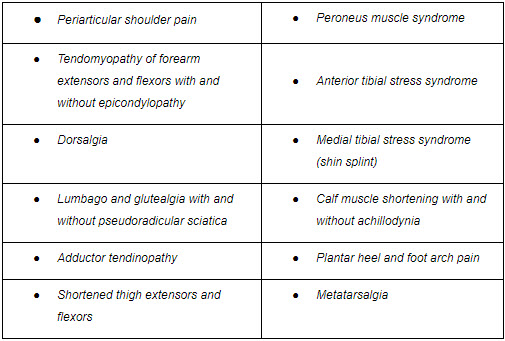For physicians who use or are considering using Extracorporeal Shockwave Therapy (ESWT) in their practices, research and learnings from like-minded medical professionals are invaluable. Level 10 books offer just that, with each book providing a compilation of insights across a range of medical specialties.
 Shockwave Therapy in Practice: Myofascial Syndromes and Trigger Points, written by renowned orthopaedic specialist Dr. Markus Gleitz, offers a deep dive on the application of shockwaves in muscles. This work of reference is created specifically for orthopaedists, specialists in sports medicine, and muscle therapists who are interested in the treatment of trigger points and myofascial pain syndromes using extracorporeal shockwaves.
Shockwave Therapy in Practice: Myofascial Syndromes and Trigger Points, written by renowned orthopaedic specialist Dr. Markus Gleitz, offers a deep dive on the application of shockwaves in muscles. This work of reference is created specifically for orthopaedists, specialists in sports medicine, and muscle therapists who are interested in the treatment of trigger points and myofascial pain syndromes using extracorporeal shockwaves.
This helpful Physician Overview gives you a quick look at what you’ll find in the book, Shockwave Therapy in Practice: Myofascial Syndromes and Trigger Points. The book presents not only the physical principles of shockwaves; it describes the pathophysiological aspects as well as the root causes of muscular pain. Also covered are the diagnostic and therapeutic possibilities of using radial and focused shockwaves on muscles in a comprehensive and practical manner. Highlights include the following:
Physical basics
What are the physical basics of both focused shockwaves and radial shockwaves? View a clinical comparison of shockwaves and pressure waves.
Muscles as organs of pain
Learn about the pathophysiology and local causes of muscle pain and referred pain. This section also discusses:
- Muscular trigger point (MTrP)
- Extramuscular trigger points
- Duration of myofascial pain treatment
- Errors in the treatment of myofascial pain
Shockwave application to muscles
Explore how focused and radial shockwaves were historically applied to muscles to alleviate pain and reduce muscle tone and muscle shortening, and how they are used today. This section takes a deep dive on the mechanisms of action in muscle treatment. It discusses the benefits, indications and contraindications, and explores diagnoses prior to shockwave therapy.
Physicians will also learn about treatment and therapy, gaining insights into the following areas:
- Treatment routine
- Treatment parameters
- Treatment frequency
- Treatment documentation
- Therapy progress and success
Indications for success
What are the orthopaedic indications that are treated most successfully with shockwave therapy? Discover a wide range of indications, starting with one of the most frequent: cervical syndromes with brachialgia, dorsalgia and cephalalgia.
For each indication, you’ll find recommendations for treatment of the most commonly affected muscles, with user photos and a number of examples from the field. Indications listed in the chart below are accompanied by data points and useful visuals that include ultrasound images, photographs of proper shockwave applications, and application tips and methods (i.e., patient positioning, treatment techniques, type of shockwave used, etc).
Indications include:

If you’re interested in the complete Level 10 book, Shockwave Therapy in Practice: Myofascial Syndromes and Trigger Points, you may place your order here.
Questions or comments? Ask them below.


